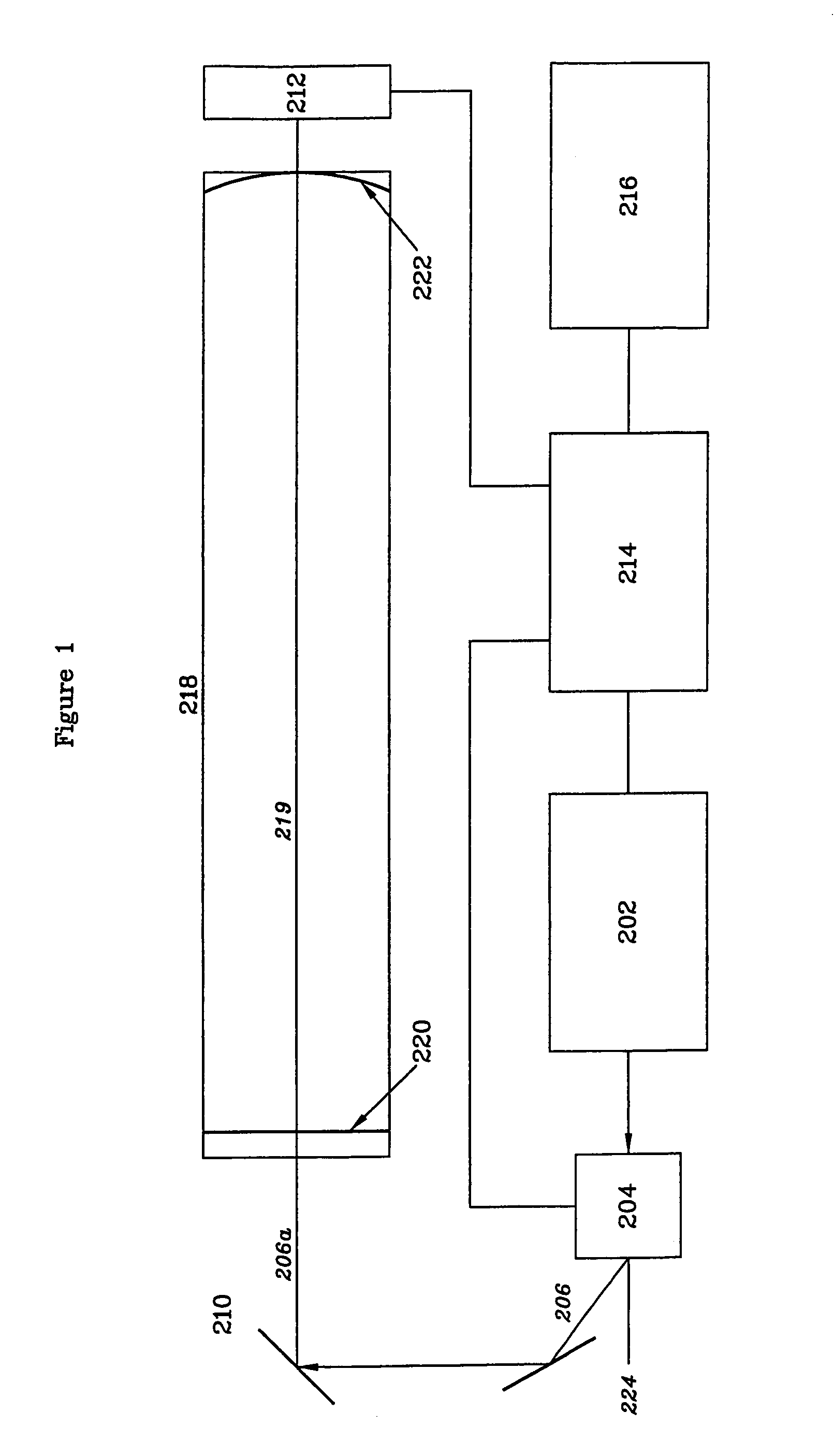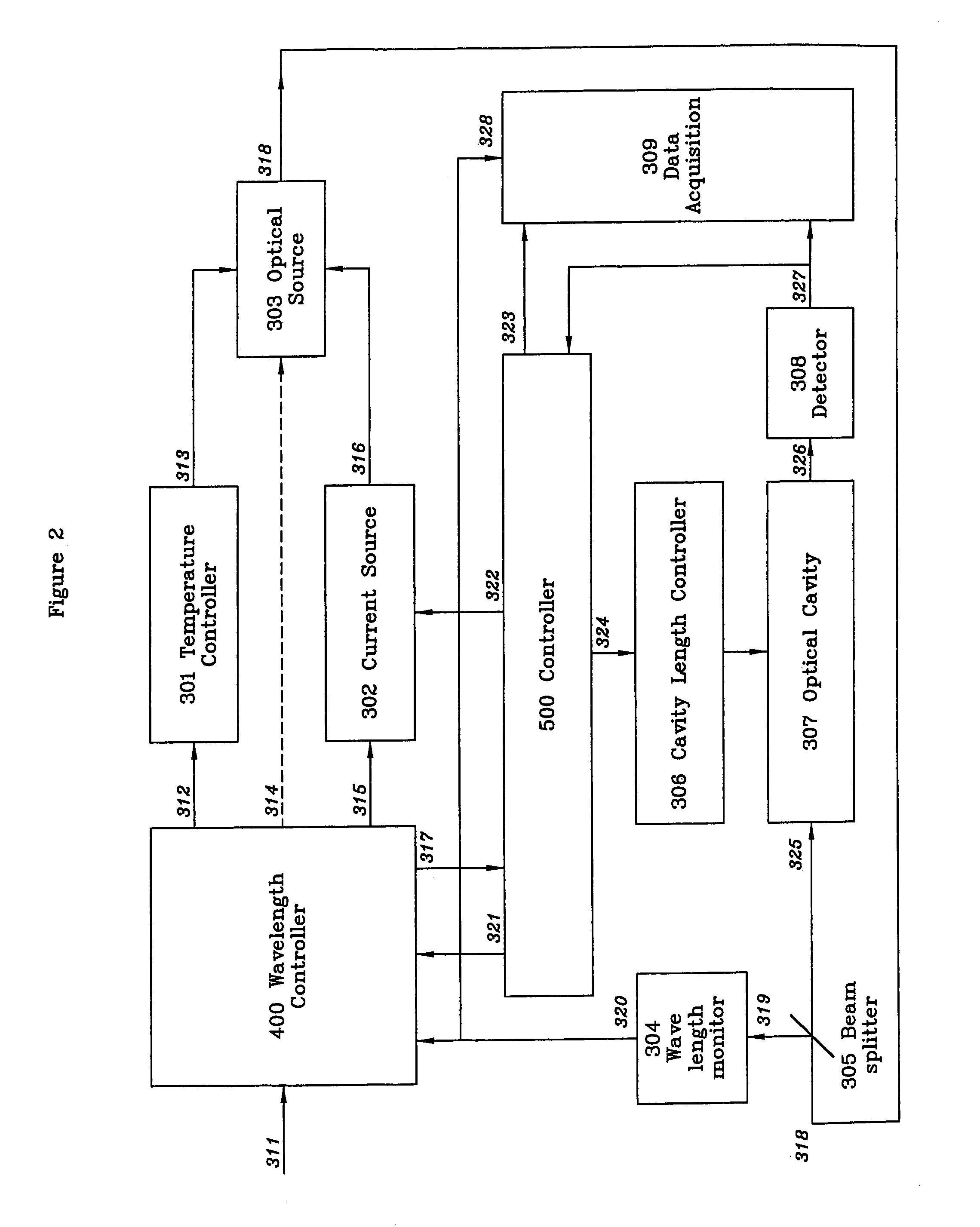Wavelength control for cavity ringdown spectrometer
a ring-down spectrometer and wavelength control technology, applied in the field of absorption spectroscopy, can solve the problems of limiting the amount of cavity filling that can be achieved in practice, affecting the repetition rate and hence measurement speed, and not being able to achieve the degree of precision achievable with an optimized crds instrument, etc., to achieve the effect of less time, reduced statistical error in ring-down time, and increased rate of measuring ring-down times
- Summary
- Abstract
- Description
- Claims
- Application Information
AI Technical Summary
Benefits of technology
Problems solved by technology
Method used
Image
Examples
Embodiment Construction
[0054]The operation of the prior art CRDS system shown in FIG. 1 has already been described.
[0055]FIG. 2 illustrates the major components and functioning of a CRDS system in accordance with the present invention. Starting with optical source 303, a semiconductor laser (or laser array as previously described), the laser is electrically pumped by current 316 from current source 302. Laser light 318 emitted and divided by beam splitter 305. A small portion of the light 319 is directed to wavelength monitor 304. The remaining light 325 directed into optical cavity 307. A first detector 308 monitors the level of cavity filling by measuring the amount of light 326 is passing out of one of the cavity mirrors. Detector 308 inputs the information 327 regarding the extent of cavity filling (or the ring-down signal) to a data acquisition unit 309 and a first controller 500. When detector 308 indicates that optical cavity 307 is sufficiently full, controller 500 sends signal 322 to current sour...
PUM
| Property | Measurement | Unit |
|---|---|---|
| frequency accuracy | aaaaa | aaaaa |
| time | aaaaa | aaaaa |
| time | aaaaa | aaaaa |
Abstract
Description
Claims
Application Information
 Login to View More
Login to View More - R&D
- Intellectual Property
- Life Sciences
- Materials
- Tech Scout
- Unparalleled Data Quality
- Higher Quality Content
- 60% Fewer Hallucinations
Browse by: Latest US Patents, China's latest patents, Technical Efficacy Thesaurus, Application Domain, Technology Topic, Popular Technical Reports.
© 2025 PatSnap. All rights reserved.Legal|Privacy policy|Modern Slavery Act Transparency Statement|Sitemap|About US| Contact US: help@patsnap.com



